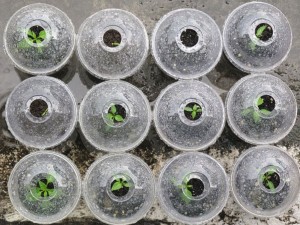Outdoor spaces are essential for bringing us close to nature. Being in a green space has a positive effect on our health and psyche. When you live in a dry climate or are going through a drought, it can be challenging to maintain the plants you love. Fortunately, there are some tips for landscaping when you don’t have access to an ever-flowing source of water.

Xeriscaping
Xeriscaping is the art of creating a pleasing outdoor space that doesn’t require water from irrigation. In this kind of design, you’ll empty plants that are native to the region, so they are accustomed to the soil and levels of rainfall. Lawns typically cannot exist in xeriscaping, but gravel and native grasses take its place. There’s a peacefulness to a landscape designed with xeriscaping in mind. There’s no concern about watering or protecting from frost or pests.
Artificial Turf
If you’re someone who loves the way a green lawn makes you feel, consider investing in synthetic turf. It may cost you upfront, but the amount of time and money you will save on maintenance will be worth the initial price. Artificial turf Thousand Oaks has some great examples. It is so realistic now; you really can’t tell the difference unless you inspect it.
Permaculture
Permaculture is a way to design your outdoor space, so there is no energy loss. Many of you have heard of companion planting. When you plant corn an beans next to each other, the nutrients one plant puts in the soil, the other plant uses, and vice versa. This idea can be applied to your whole home and yard if done correctly. For irrigation needs, you can harvest rainwater or install a gray water system.
Just because you live in the desert or are experiencing a drought does not mean you can’t have a beautiful garden!

 Do you want to garden and produce beautiful or useful plants without worrying about soil or weather conditions? Then you want to try hydroponics. As you get started with hydroponic growing, it’s helpful to find and buy grow kits, such as this one at www.aquaculture-hydroponics.
Do you want to garden and produce beautiful or useful plants without worrying about soil or weather conditions? Then you want to try hydroponics. As you get started with hydroponic growing, it’s helpful to find and buy grow kits, such as this one at www.aquaculture-hydroponics.